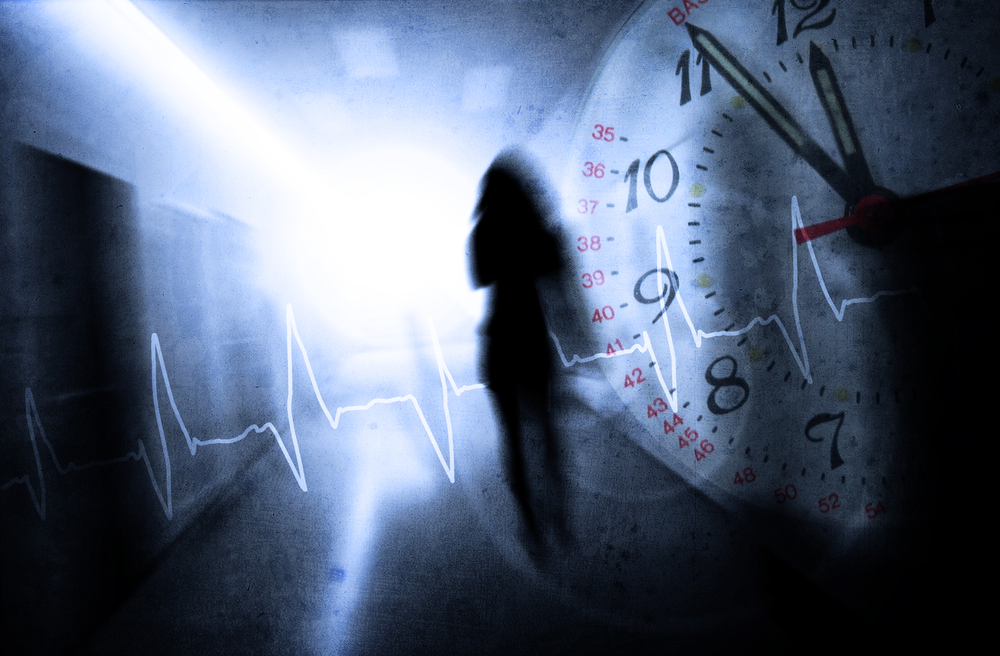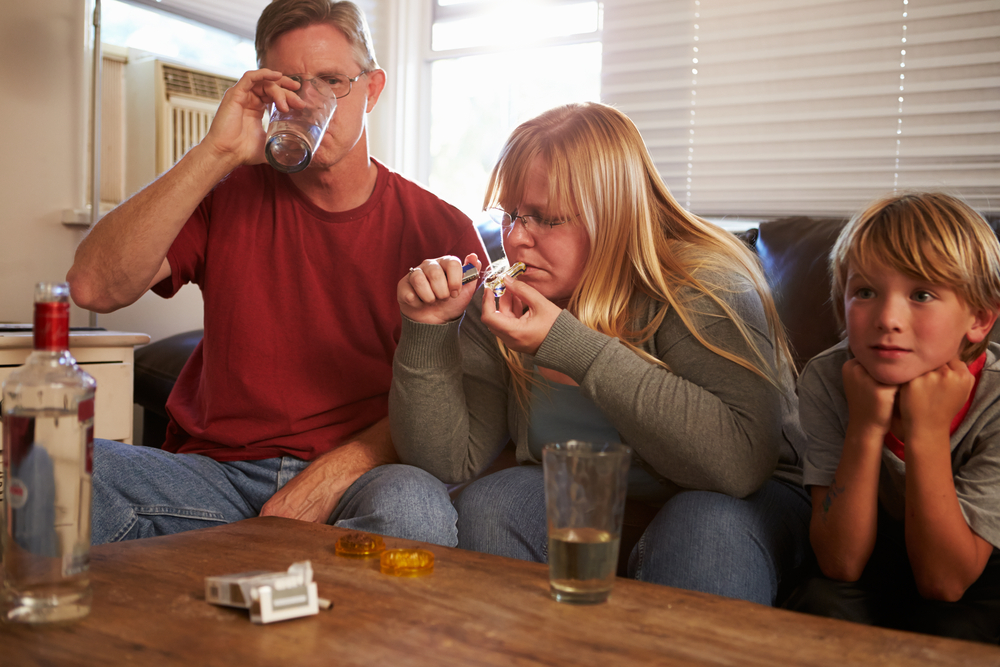
Bipolar disorder is associated with a heightened risk of suicide compared with the general population. Osby et al (2001) found a 15-fold increased risk of suicide in men and a 20-fold increased risk in women. Similarly, Tondo et al (2007) found that in a single year approximately 0.017% of the international population died by suicide, whereas for people with bipolar disorder it was as high as 0.4%.
More controversially, bipolar disorder has been linked with aggressive and criminal behaviours such as robbery and assault, especially during manic episodes (Látalová, 2009). A systematic review (Fazel et al, 2010) found that people with bipolar disorder were more likely to have committed a violent crime than the general population. However, when those with a co-morbid substance misuse disorder were excluded from the analysis, the increased risk was found to be minimal.
In fact, research findings in this area are very mixed, with many researchers concluding that the underlying cause of increased violence is due to co-morbid substance misuse disorders rather than the psychiatric diagnosis. With charities such as Rethink and Mind long campaigning to reduce the perception that mental health disorders are associated with dangerous behaviour, it is very important to improve our understanding of this complex area.
A recent study (Webb et al, 2014) has used Swedish national registers to investigate the association between bipolar disorder and suicidal and criminal behaviours in people with bipolar disorder and the general population. To explore the causes of these adverse events they investigated the predictive value of individual and familial factors in the association. Siblings of people with bipolar disorder were also included in the study to explore the role of hereditary and early environmental factors.

This recent study looks at the risk of suicide and criminal behaviours in people with bipolar disorder, their siblings and the general population.
Methods
Using national patient registers, people with a history of two or more inpatient or outpatient bipolar episodes and aged 15 or older between 1973 and 2009 were selected to form a bipolar cohort. Full siblings of these individuals were located using the multi-generation register to form a sibling cohort, providing they did not have a diagnosis of bipolar disorder. For each participant in the bipolar and sibling cohort, 20 matched controls were randomly selected from the general population, matched by age and gender.
The main outcomes were the following adverse events:
- Suicide (from the national cause of death register)
- Attempted suicide (from hospital records)
- Violent and non-violent crime (from national crime registers)
Using fixed effects regressions the authors calculated the risk of having an adverse event in the bipolar and sibling cohort compared with the respective control cohorts. Proportional hazards models and multiple regression models were used to investigate the time from diagnosis to an adverse event and to explore the role played by a series of patient and parental risk factors in the association. These were:
- Unmarried status at first diagnosis
- Low income
- Immigrant status (first or second generation)
- Attempted suicide (for participants and their parents)
- Alcohol or drug disorder (for participants and their parents )
- Parental psychiatric diagnosis

The authors investigated the role played by a range of patient and parental risk factors.
Results
Bipolar cohort compared with the general population
- The cohort consisted of 15,337 people with bipolar disorder and 306,740 control participants
- Compared with the general population, participants with bipolar disorder had a significantly greater risk of:
- Completed suicide (RR=18.82, 95% CI 15.95 to 22.21)
- Attempted suicide (RR=14.29, 95% CI 13.47 to 15.16)
- Violent crime (RR=5.00, 95% CI 4.58 to 5.45)
- Non-violent crime (RR=2.93, 95% CI 2.78 to 3.09)
- The effects sizes for these risks were large
- After adjusting for alcohol/drug disorders, family income, immigrant status, and marital status the relative risks were slightly attenuated but still significant
- When men and women were looked at independently, the risk of suicidal and criminal outcomes compared with the general population were disproportionally larger for women
Sibling cohort compared with the general population
- The sibling cohort included 14,677 siblings and 295,198 control participants
- Overall siblings had a significantly higher risk of having an adverse event than the general population although effect sizes were a lot smaller than those in the bipolar cohort
Risk factors in the bipolar cohort
All four outcomes were independently predicted by:
- Having the first two bipolar episodes as an inpatient
- A history of attempted suicide
- Having a diagnosis of alcohol/substance misuse disorder
Completed suicide was predicted by:
- Being male
- Having the first two episodes as an impatient
- Having attempted suicide
- An alcohol/drug disorder diagnosis
- Committing a non-violent crime before bipolar diagnosis
Being unmarried was protective against suicide.
Attempted suicide was predicted by:
- Coming from a low income family (weak association)
- Having the first two episodes as an inpatient
- Parental suicide
- Alcohol/drug disorder diagnosis
- Parental violent and non-violent crime (weak associations)
Violent crime was predicted by:
- Being male
- Coming from a low-income family
- Immigrant status
- Parental suicide
- Parental diagnosis of alcohol/drug disorder
Non-violent crime was predicted by:
- Being male
- Coming from a low-income family
- Immigrant status
- Parental suicide
- Alcohol/drug disorder diagnosis
- Parental violent and non-violent crime

Compared with the general population, people with bipolar disorder had a significantly greater risk of killing themselves and committing violent and non-violent crime.
Conclusions
The authors concluded that:
Our findings highlight the importance of comprehensive assessment of multiple outcomes in bipolar disorder.
The raised risks for multiple adverse outcomes in bipolar disorder may be mediated by poor impulse control. We did not measure impulsivity directly but out findings clearly indicate a key role for substance misuse. High levels of disinhibition during manic or hypomanic phases of illness due to heavy alcohol or drug use may be an important underlying mechanism.
Strengths and limitations
This was a good quality study. Using total population data the authors were able to include a very large number of participants increasing the power of the study and the precision of point estimates. Having collected data from a range of national registers which were interlinked with almost total completeness, outcomes were highly reliable and the authors were able create an accurate timeline of events for each participant.
A limitation to this study was that risk factors were not explored in the sibling cohort. It would have been interesting to see whether familial variables had the same effect on siblings as they had on those with bipolar disorder. The authors also suggested that the elevated risk found in the sibling cohort could be attributed to the effects of unmeasured but shared genetic and environmental factors, however, as siblings could have any psychiatric diagnosis (except for bipolar disorder) it is possible that this also played a role in the association.
Summary
Overall this was a high quality study which found a heightened risk of suicidal and criminal behaviours in people with bipolar disorder and their siblings compared with the general population. These behaviours were independently predicted by disease severity, attempted suicide and alcohol or substance misuse disorders. Other factors such as low income, parental suicide and alcohol/substance misuse disorders also played a role.
This study stresses the importance of risk assessment for dangerous behaviours in this population, especially for those with existing alcohol/substance misuse disorders, a higher severity of illness and a family history of suicide and crime. As the switch from manic episode to depressive episode is likely to increase the risk of suicide, there is also a need for better monitoring of symptoms and healthcare professionals need to be aware of the changeable nature of the disorder. With the majority of adverse events occurring within the first years after diagnosis (63% for suicide and 70% for violent crime), early intervention is key.
A recent report by the mental health charity Mind found that people with a mental health disorder were more likely to be victims of crime than the general population (e.g. women were 10 times more likely to be victims of assault) and more likely to be dissatisfied with the support they receive. As such it would be of interest for future studies to explore whether being a victim of crime is a risk factor for subsequent criminal behaviour and for suicidal acts in this population.

This evidence reinforces the importance of risk assessment for dangerous behaviours in people with bipolar disorder.
Links
Webb RT, Lichtenstein P, Larsson H, Geddes JR, Fazel S. Suicide, hospital-presenting suicide attempts, and criminality in bipolar disorder: examination of risk for multiple adverse outcomes. J Clin Psychiatry. 2014 Aug;75(8):e809-16. doi: 10.4088/JCP.13m08899. [PubMed abstract]
Osby U, Brandt L, Correia N, Ekbom A, Sparén P. Excess mortality in bipolar and unipolar disorder in Sweden. Arch Gen Psychiatry. 2001 Sep;58(9):844-50. [PubMed abstract]
Tondo L, Lepri B, Baldessarini RJ. Suicidal risks among 2826 Sardinian major affective disorder patients. Acta Psychiatr Scand. 2007 Dec;116(6):419-28. [PubMed abstract]
Látalová K. Bipolar disorder and aggression. Int J Clin Pract. 2009 Jun;63(6):889-99. [PubMed abstract]
Fazel S, Lichtenstein P, Grann M, Goodwin GM, Långström N. Bipolar disorder and violent crime: new evidence from population-based longitudinal studies and systematic review. Arch Gen Psychiatry. 2010 Sep;67(9):931-8. doi: 10.1001/archgenpsychiatry.2010.97. [PubMed abstract]
Petite, B. et al At risk, yet dismissed: The criminal victimisation of people with mental health problems (PDF). Victim Support and Mind, 2013.

RT @Mental_Elf: Bipolar disorder, suicide and criminality http://t.co/LuNYBa6BtB
Bipolar disorder, suicide and criminality: Elena Marcus summarises a double case-cohort study, which investiga… http://t.co/X8RnQQyItj
The Mental Elf liked this on Facebook.
Morning @OxPsychiatry @seena9 We’ve blogged about your J-Clin-Psych bipolar disorder, suicide and crime study today http://t.co/plp442Sj0m
@Mental_Elf @seena9 Good choice Elf – see you later
“@Mental_Elf: Bipolar disorder, suicide and criminality http://t.co/El1kNrFslY” Really interesting report.
June Dunnett liked this on Facebook.
Kehksha Azam liked this on Facebook.
Today @_elenamarcus looks at the risk of suicide & criminal behaviours in people with bipolar disorder http://t.co/Gr5AxXFLVO
‘Sue Mario liked this on Facebook.
@nacro @sacro Welcome your thoughts on our blog highlighting new research on bipolar disorder, suicide & criminality http://t.co/Gr5AxXFLVO
RT @Mental_Elf: Morning @MentalHealthCop Pls tell me what you think of our blog on bipolar disorder, suicide & criminality http://t.co/Gr5A…
Bipolar disorder, suicide & crime: http://t.co/Gr5AxXFLVO < Anti-stigma campaigns need to address this evidence to help service users
Is there anyone at @TimetoChange who could respond to our blog about bipolar disorder, suicide & criminality? http://t.co/Gr5AxXFLVO
Summary of a study investigating bipolar disorder, suicide and criminality http://t.co/V3Dptpewe3 from @Mental_Elf
Cal Desmond-Pearson liked this on Facebook.
Nice summary. Crime outcomes were also associated with previous crime in the individual. Good point about looking at risk factors in siblings – and our work in schizophrenia (Lancet Psychiatry 2014: http://www.thelancet.com/journals/lanpsy/article/PIIS2215-0366(14)70223-8/abstract) suggests that there may be overlaps, esp for previous self-harm, criminality, and substance abuse. Key messages are that multiple risks should be assessed and early intervention to treat high-risk patients may prevent adverse outcomes.
#bipolar disorder, #suicide & criminality http://t.co/mjgrRzl6lF
@BipolarUK @bipolarucl @BipolarBlogger Any thoughts on this recent study? Bipolar disorder, suicide & criminality http://t.co/Gr5AxXFLVO
@sacro_ Welcome your thoughts on our blog highlighting new research on bipolar disorder, suicide & criminality http://t.co/Gr5AxXFLVO
@Mental_Elf Agree that further study of links between bipolar and offending is needed – particularly when substance misuse involved
Read my new blog about the risk of suicide and criminality in people with bipolar disorder http://t.co/qAktDP0jtn Thoughts welcome!
Study finds that “22.2% of bipolar disorder cohort members engaged in suicidal or criminal acts after diagnosis” http://t.co/Gr5AxXFLVO
@Mental_Elf You ought to mention that much of the increase in criminality is related to drug abuse.
Bipolar Disorder markedly raises risk suicide/substance/violence
http://t.co/rwLtvgTayI @Mental_Elf
Treatment access crucial
@AllenFrancesMD @Mental_Elf Study doesn’t establish usefulness of treatment.
Mental Elf: Bipolar disorder, suicide and criminality http://t.co/7jlGSzsJfS
Recent study reinforces importance of risk assessment for dangerous behaviours in people with bipolar disorder http://t.co/plp442Sj0m
Don’t miss: Bipolar disorder, suicide and criminality http://t.co/plp442Sj0m
Another excellent article from @Mental_Elf: Don’t miss: #Bipolar disorder, #suicide and criminality http://t.co/LWkrMoowyS #mentalillness
Princess Sunshyne liked this on Facebook.
[…] the general population (Crump et al 2013; Hoang et al 2013). This is often due to high rates of suicide and violent crime, which I blogged about last year, but may also be attributed to a heightened risk for physical health […]
I suffer from Bipolar Disorder. I am stigmatized by findings like this because it is not complete. In all fairness, your study should have also reflected the risk of those who seek treatment and manage medication and lifestyle under a doctor’s care. I have a stable happy life without incidents. I consider myself neither a threat to anyone nor myself. My psychologist would agree. But because of reports like your findings (incomplete), I am even shunned from participating in Christian ministry. Its not fair.